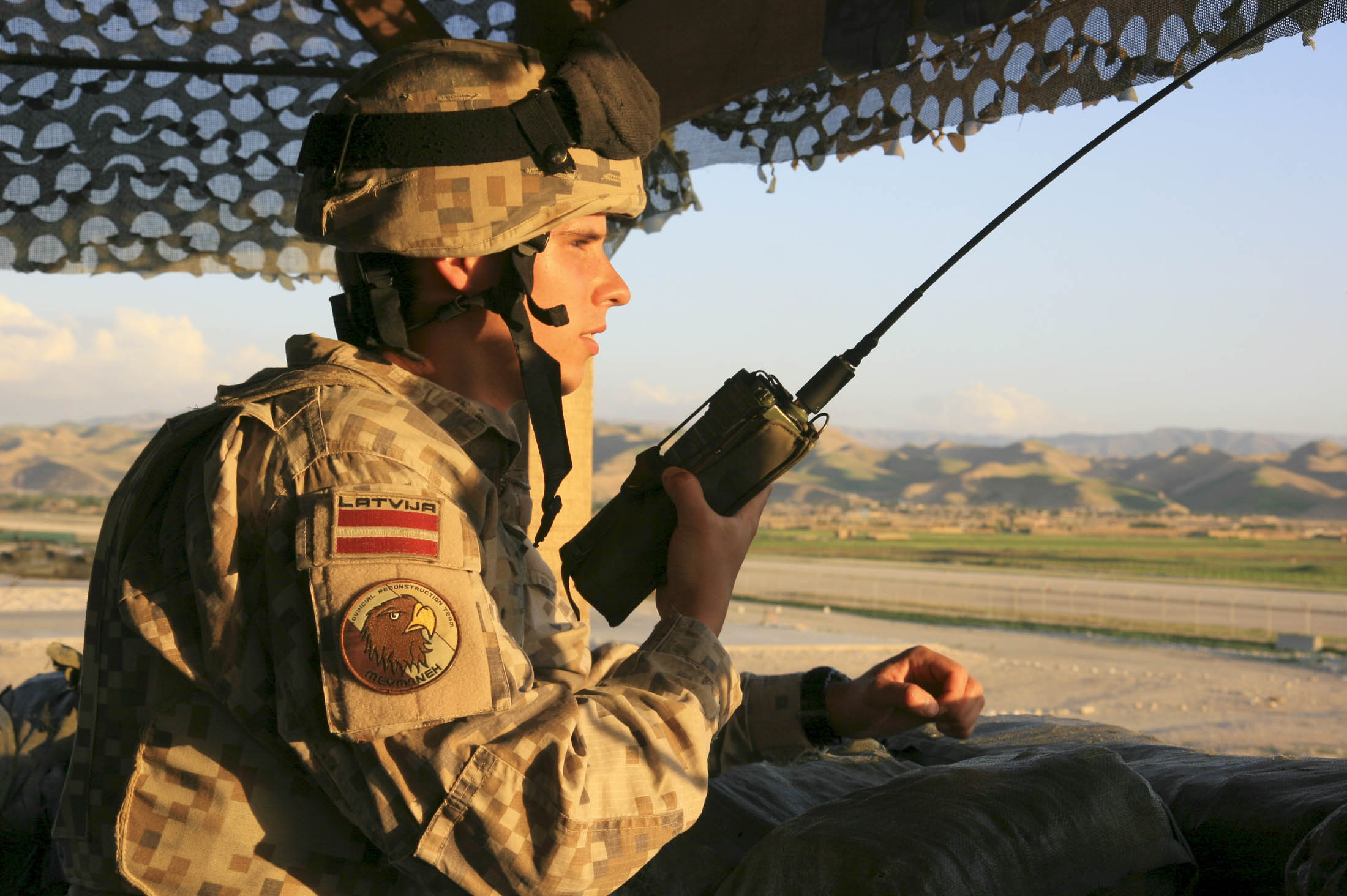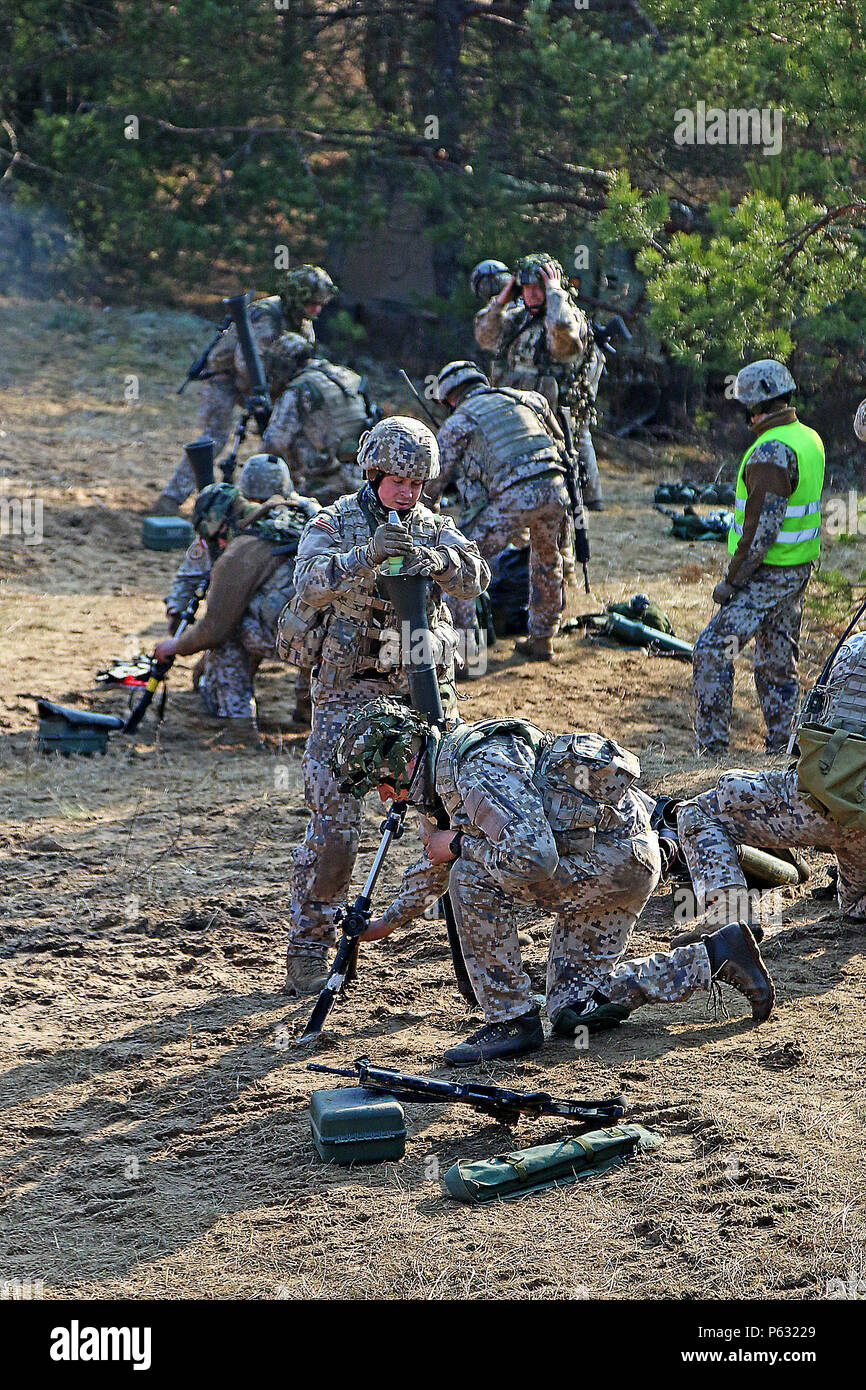Latvian Military Bases - The Ministry of Defense is considering the creation of another international military base in Latvia, Defense Minister Artis Pabriks told LETA on April 25.
A statement issued last week by the prime ministers of the Baltic states said that three combat divisions, one in each Baltic state, designated for joint defense and capable of mobilizing national defense forces, will be needed to ensure a permanent presence of joint forces in the country. . The Baltic States.
Latvian Military Bases

Commenting on the statement, Pabriks said that there is "quite a long way" to move this division, but it is expected that decisions will be made at the NATO summit in Madrid this summer to send a team to each Baltic region. and emphasizes the presence of more US troops and greater US military financial support.
Russian Armed Forces In The Baltic Sea Region
If the Allies decide to send more energy to Latvia, infrastructure investments will be necessary. This means that a new training camp and a second international base will be needed, as the joint forces are currently based in Ādaži.
The minister has yet to comment on the potential location of his base, but there are believed to be many possibilities. The ministry will choose the one with the most economic benefits, Pabriks said. The Baltics Hold the Long Game Against Russia The Kremlin is down, but it's not outside of Ukraine, and the Baltic states want to make sure they don't follow suit.
NEW to subscribers: Click + to receive alerts on new stories from Robbie Gramer.
Soldiers take part in the Adazi military base, northeast of Riga, Latvia, March 8, 2022.
Latvia Ready To Defend Itself 'like Never Before': Deputy Pm
Soldiers take part in military training at the Adazi military base, northeast of Riga, Latvia, March 8, 2022. Toms Norde/AFP/Getty Images
ADAZI, Latvia—The Adazi military base is bustling with soldiers from more than a dozen NATO countries — including Latvia, Canada, Spain, Italy and Poland — shuffling between camps before military training in the tiny Baltic state.
Heading into the project, dubbed Silver Arrow, is the advanced US weapons system known as HIMARS, which has earned a reputation as a "game changer" in Ukraine over months of Russian aggression. Col. Igors Harlapenkovs, the director of the joint headquarters of the base, the work is about the ability of NATO forces to deploy military resources in the east of NATO and test the deployment pressure.

"The idea is that we will train to work with whatever the US or NATO can send as quickly as possible," Harlapenkovs said.
Stronger Nato Reaction To Russian Actions In Georgia, Crimea Would Have Prevented Ukraine Invasion, Says Latvian President
His calm professionalism belies the pressure Latvia has been under since neighboring Russia launched an all-out invasion of Ukraine in February.
Many experts fear that if Russian President Vladimir Putin succeeds in seizing copper from Ukraine, the Baltic states — the three small countries bordering Russia and its NATO ally Belarus — could be the next target.
But officials in these vulnerable Baltic states are quick to make it clear that they are not waiting for the Russians to step in. Even before Putin's invasion of Ukraine, NATO began massing more troops and military equipment in the Baltic states and increased the level of its military exercises and prevented Moscow from making power plays on NATO territory.
Despite its small size and defense budget, Latvia is strengthening its military, transporting as much spare weapons as possible to Ukraine and preparing to handle any NATO force. The idea is to send a message to Putin: any move by the Baltic states will not be worth it. Latvia is also making plans to end its dependence on Russian energy purchases and cut Russian propaganda networks. Latvia, like its NATO neighbors to the east, is hunting a long game with Russia, trying to plan and prepare as much as possible to show the Kremlin that it will be ready for any future military confrontation.
Us, Latvia Air Forces Partner For Saber Strike 16
"I don't think this war will weaken Russia so much that it will stop being a threat to us," Latvian Defense Minister Artis Pabriks told a small group of Foreign Policy and US experts in interviews organized by the German Marshall Fund.
The Adazi site, located in the forested areas northeast of Riga, the capital of Latvia, has all the signs of a future battlefield-ready facility. The stone fields are loaded with goods on shipping containers, construction equipment is hard at work developing basic projects, and heavy vehicles are moving in and out of warehouses ahead of military exercises.
Latvian leaders have called for raising national defense spending to 3 percent of the country's GDP (from about 2.3 percent in 2021 and less than 1 percent in 2014), according to two Latvian officials who spoke on condition of anonymity. Latvia is putting forward plans to restart conscription, which was abolished in the mid-2000s. It is also building new infrastructure to accommodate troops from other NATO countries as they rotate for training. The government plans to demobilize less than 1,000 soldiers next year, and aims to increase the number of soldiers to 6,000 by 2028, according to several Latvian authorities.

Those plans took on new urgency Wednesday when Putin ordered the mobilization of some of the 300,000 troops to fill the ranks of his army, which has been depleted after nearly seven months of war in Ukraine — a decision that could further embarrass resource-strapped Russians. . the army was poorly equipped and a sharp political revolution broke out in Russia. In his speech, Putin warned that the West's support for Ukraine will not continue with veiled warnings about Russia's nuclear weapons if the West targets Russia's "territorial integrity."
Exercise Summer Shield
"Putin remains very dangerous," German Chancellor Olaf Scholz told NBC News on Wednesday. "And now he's disappointed and he's making more and more decisions, but I'm sure this won't help him."
Officials in the region have repeatedly stressed that there is no immediate threat of an attack from Russia on the Baltic states. Unlike Ukraine, Latvia and neighboring Estonia and Lithuania are firmly within NATO, and thus protected by the alliance's collective defenses backed by the nuclear powers of the US, UK and France. Russia, on the other hand, has withdrawn most of its ground forces around the Nordic-Baltic region to try to stop its war crisis in Ukraine, giving the region a rare and small sense of freedom.
But the Baltic states still see Russia as a long-term threat, regardless of how the war in Ukraine goes. "There is no sense of an imminent crisis, but there is a sense of danger," said Janis Kazocins, Latvia's national security adviser and director of the intelligence agency. "Russia will remain a long-term threat, even if its forces are deployed in Ukraine. We will have Russia as a permanent neighbor."
And unlike Ukraine, Latvia is relatively small. It doesn't have much ground left to buy time to reconfigure and strike against potential military attacks—what defense planners call "strategic depth" in military parlance. This means that if the worst happens and Russia starts trying to attack in the future, Latvia must be ready to quickly deploy NATO troops and weapons to the front lines as soon as possible.
The Baltic States Want More Nato. They Won't Get All They Seek.
"The distance from here to Russia is only 200 kilometers [or 124 miles]," Harlapenkovs said. "So we don't have time. We have to train ourselves to get out as soon as the goods arrive. The main task of our school is to develop plans and training in peacetime, so that we can use them to defend ourselves if necessary."
Many NATO partners, meanwhile, have joined counter-preparations and deterrence by expanding the alliance's Baltic footprint through the so-called "Enhanced Forward Presence," which includes the Canadian-led Latvian wargroup. After seeing how the Russian military orchestrated the surprise attack on Ukraine—and the war crimes Russian soldiers committed against Ukrainians in Bucha, Izyum, and other temporarily occupied Ukrainian cities—NATO is changing its long-term deterrence strategy against Russia. It moves toward a strategy of trying to deny an attack, rather than threatening a massive military response after an attack or land grab.
"Prevention through punishment is no longer effective. We have to move to deterrence through negation," said Kazocins, using military rhetoric for this new NATO approach.

Adazi's foundation makes this new era in the thinking of security planners. Throughout the base, which houses around 3,000 personnel, there are Polish tanks, Canadian and Czech weapon systems, Italian tank destroyers and more. At the nearby Lielvarde base, groups of US helicopters are deployed along with the Spanish-made Apache missile systems in Norway. These combined units from troop to squad level meet and train in situations that not every Westerner would pray for.
The Combat Battalion On Its Way To Latvia
"If you're a small Baltic country, you'll never be disappointed
Post A Comment:
0 comments so far,add yours